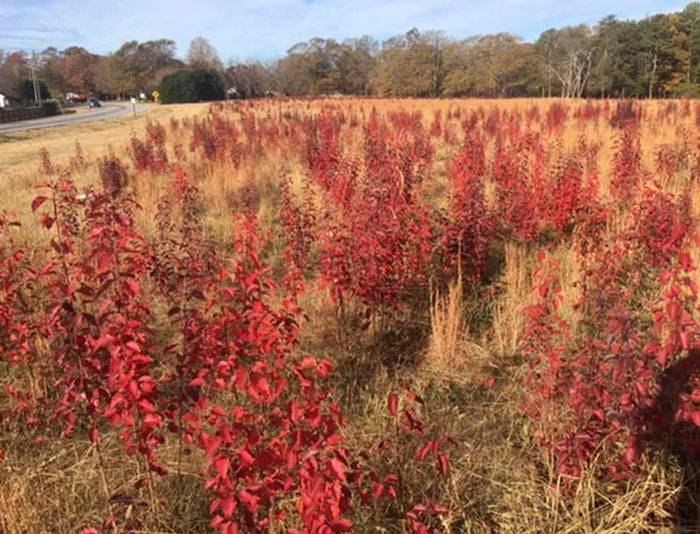
Early buds and weak limbs characterize pear trees.
Buy-back offer for cut-down pear trees meant to call attention to the fact they are invasive
Randy Haas, manager of Cardinal Valley Habitat, wants everyone with a bradford pear tree to know that if they cut it down they can get a native, non-invasive replacement tree for free. It’s a program meant to raise awareness of how pear trees have become invasive.
Besides their notoriously weak branches, Bradford pear trees (and other varieties) that were trendy in the 1990s are now considered out of control.
The pear trees were supposed to be sterile. They don’t reproduce amongst themselves, but they have cross bred, become fertile and spread in uncontrolled areas.
These trees are creating quite a mess!
When they bloom, they seem like they are everywhere! I’ve cut down many large trees on Cardinal Valley acres, and continue to find smaller ones. I just found a few more smaller ones this morning that I will go back and take care of later.
The church north of town on main street… where the road turns back east towards the concrete plant, has a whole bunch of them planted around the perimeter of their property adjacent to the road. They are scattered throughout town, and there are some in King Jack Park.
If you go east of Joplin on I-44 when the trees are blooming, it looks like a field of snow in some places, because there are so many trees there. The construction going on there might have gotten rid of some though, hopefully.
– Randy Haas, manager of Cardinal Valley Habitat
Ann Koenig, a Missouri Department of Conservation forester agrees with Haas. “Many people have enjoyed Callery pear trees for years. However, besides the fact that these trees often break apart in storms, and that they have foul-smelling flowers, it turns out these trees are spreading throughout fields and forests, causing problems in more natural areas, along roadsides, commercial areas, private landowner property, and other locations. We are excited to work with our partners to provide great, native trees to those who are ready to replace them.”

Durant Ashmore, a South Carolina landscape designer, further describes the problem:
“Because of the cross pollination problem, pear trees have now proliferated exponentially across our environment. And, to make matters worse, the evil offspring has reverted to the ancient Chinese Callery pears which form impenetrable thorny thickets that choke out the life out of pines, dogwoods, maples, redbuds, oaks, hickories, etc.
When you see those fields of white flowering trees, please don’t get giddy with excitement over pretty white flowers. What you are looking at are Callery pears destroying nature. Callery pears have 4 inch thorns. They can’t be mowed down. Those thorns will shred John Deere tractor tires. They can only be removed by steel tracked dozers, decreasing the value of agricultural or forest land to the tune of $3,000 per acre.”
Register now with photo of cut-down pear tree to pick up a replacement tree in Joplin on April 26
To spread awareness about how the invasive Callery (Bradford) pear tree (Pyrus calleryana) causes harm to economics and environment, the Missouri Invasive Plant Council, Forest ReLeaf, and the Missouri Department of Conservation are hosting their first Callery Pear Buy-back in Joplin (as well as other locations across the state).
The registration process involves cutting down a Callery pear tree and submitting a photo of it to the Missouri Invasive Plant Council.
The offer is limited to one native tree per photo proof of one cut-down Callery pear.
Once registered, participants are invited to pick up their trees from the MDC Shoal Creek Conservation Education Center from 3 p.m. to 6 p.m. Tuesday, April 26.
For further questions, contact Jon Skinner at jon.skinner@mdc.mo.gov or (417)629-3434 ex. 4543.
The Webb City Sentinel isn’t a newspaper – but it used to be, serving Webb City, Missouri, in print from 1879-2020. This “newspaper” seeks to carry on that tradition as a nonprofit corporation.
© All Rights Reserved 2025
DIY website design by Bob Foos